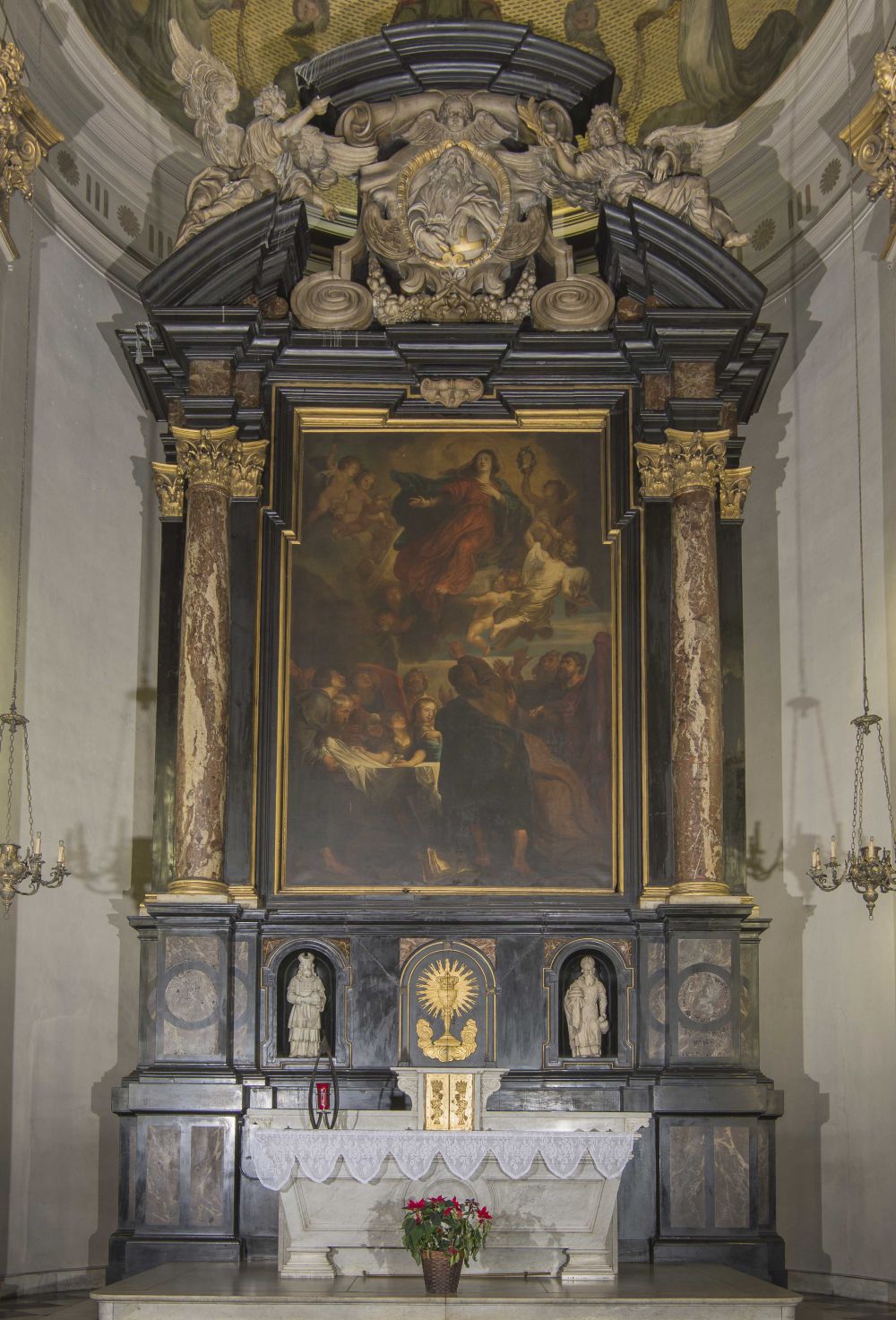In search of a lesser-known Rubens

Lost sculptures
As a sculpture specialist, Valerie Herremans was asked by the Rubenianum centre to write a volume for the Corpus Rubenianum Ludwig Burchard, which describes, volume by volume, every aspect of Rubens’ entire oeuvre. His 10,000 works of art include designs for the sculpted surrounds of paintings for altars and funerary monuments. Yet it proved difficult to identify all the architectural sculptures for which Rubens had made the design. The passage of time effaced much of the evidence. In some cases, a single sentence in an archive document is the only reference to Rubens’ hand in the project. In others, the oil sketch with his design was sawn apart and the elements scattered. In this way, Valerie Herremans’ book turned into a true detective story.

Design for a monument - Rubens made this design for a funerary monument for Jean Richardot. Illustration: Rijksprentenkabinet Amsterdam
Architectural decorations
Rubens’ interest in architecture was primarily that of a painter, rather than a would-be architect. He studied perspective and little by little the buildings in his paintings assumed a more important role and became more complex. Having mastered the art of drawing architecture, he was able to start playing with the individual ingredients, following his great example Michelangelo. He ended up developing a visual architectural language all his own. For the publishing house of his friend Balthasar Moretus, he made book illustrations consisting of architectural ornaments. He also designed two triumphal arches for the city, cutting and pasting architectural elements as he did so in the surrounds that Valerie Herremans describes.
Rubens was interested in architecture, but as a painter.
Frustrations
Prior to 1606, you needed to be a bricklayer or stonemason to be allowed to work with stone in Antwerp. A change in the law meant that designers too now involved themselves in the already niche activity of sculptural architecture. This resulted in fierce competition and tension between traditional builders and what they saw as artistic parvenus. Not that this stopped Rubens from chancing his arm in the field. And, like his competitors, he regularly came away empty-handed. The financing of all the sculptures, many of them largely in marble, cost ten times the price of the painting they framed. So projects often found themselves downsized. What’s more, Rubens had the mentality of a painter and draughtsman: his complex designs look beautiful on paper but were often too difficult to execute in practice.
His competitors had more practical experience and they were not above underhand methods to sideline the interloper. All of which got pretty frustrating, as witnessed by a furious letter to one of Rubens’ patrons. It was only later, from 1616 onwards, when he teamed up with the sculptor Hans van Mildert, that he managed to complete a number of projects. One such was the high altar of the Kapellekerk in Brussels, which can now be seen in the Sint-Joostkerk in Sint-Joost-ten-Node. Van Mildert brought Rubens up to speed so that his ideas could be implemented more effectively in reality. Meanwhile, Rubens’ fame and support meant that Van Mildert was able to gain certain commissions.

High altar - This high altar, made for the Kapellekerk in Brussels after a design by Peter Paul Rubens, can now be seen at the Sint-Joostkerk in Sint-Joost-ten-Node.
Rubens did not live to see the successful breakthrough of his architectural-sculptural designs. His inventions came too early, at a time when people were still groping for the right formula to meet the new fashion. Instead, it was through pupils of his like the sculptor Lucas Faydherbe that Rubens’ designs began to be recycled on a large scale in the second half of the 17th century.




